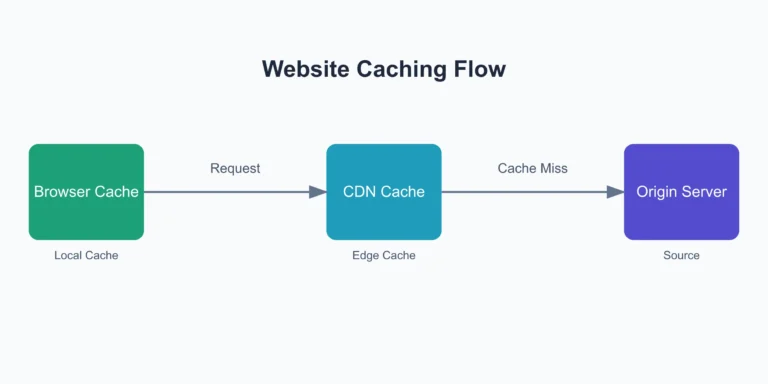How to Horizontally Scale Your WordPress Website
Introduction: The Need for Scaling in WordPress
As your WordPress site grows in popularity, you may find yourself facing challenges with increased traffic and resource demands. This is where horizontal scaling comes into play. In this comprehensive guide, we’ll explore how to horizontally scale your WordPress website to handle higher loads and improve performance.
What is Horizontal Scaling?
Horizontal scaling, also known as scaling out, involves distributing your website’s workload across multiple servers or instances. This approach differs from vertical scaling, which focuses on increasing the resources of a single server. By implementing horizontal scaling, you can effectively handle more traffic and improve your site’s overall performance and reliability.
Why Consider Horizontal Scaling for WordPress?
WordPress, despite its popularity and flexibility, can face performance bottlenecks when dealing with high traffic volumes. While vertical scaling (adding more RAM and CPUs) is a common first step, it eventually hits limits due to WordPress’s architecture. Horizontal scaling offers a more robust solution for long-term growth and performance optimization.
Key Components for Horizontally Scaling WordPress
To successfully scale your WordPress site horizontally, you’ll need to address several key components:
- Load Balancing: Distribute incoming traffic across multiple web servers.
- Database Scaling: Implement read replicas and manage database connections efficiently.
- File System Management: Ensure consistent access to media and uploads across all server instances.
- Caching: Implement effective caching strategies at multiple levels.
- Content Delivery: Utilize Content Delivery Networks (CDNs) for static assets.
Let’s dive into each of these components and explore implementation strategies for each one.
1. Load Balancing
Implement a load balancer to distribute incoming requests across multiple WordPress instances. A load balancer is a device or software that distributes incoming network traffic across multiple servers to ensure no single server becomes overwhelmed with requests. It acts as a traffic cop for your website, routing visitors to the most available server, thereby improving response time and maximizing throughput. Popular options include:
- Nginx as a reverse proxy (requires manual build and configuration)
- AWS Elastic Load Balancer (built-in service on AWS)
- Hosting provider Load Balancer (ex: Digital Ocean)
Configure your load balancer to route requests based on factors such as: server health, current load, and geographic location.
2. Database Scaling
Database scaling is a crucial component of horizontal scaling for WordPress, as it addresses potential bottlenecks in data retrieval and storage. By implementing strategies like master-slave replication, where one master database handles writes while multiple read-only slaves handle reads, you can distribute the database workload across multiple servers, significantly improving performance and allowing your WordPress site to handle higher traffic volumes. To scale your WordPress database:
- Set up a master-slave replication with one writer (master) and multiple readers (slaves).
- Use HyperDB or a similar solution to manage database connections.
- Configure your WordPress instances to write to the master and read from the slaves.
For more advanced setups, consider:
- Implementing ProxySQL for intelligent query routing
- Using Amazon Aurora or Google Cloud SQL for managed, scalable database solutions
3. File System Management
File system management is critical in horizontal scaling for WordPress because it ensures consistent access to media files and uploads across all server instances. By implementing solutions like shared network file systems (e.g., Amazon EFS) or object storage (e.g., Amazon S3 with appropriate plugins), you can maintain a unified repository for all uploaded content. To scale your filesystem, consider:
- Use a shared network file system like Amazon EFS or GlusterFS
- Using object storage solutions like Amazon S3 with a plugin like WP Offload Media
Avoid storing application code on network-mounted storage, as it can lead to performance issues.
4. Caching Strategies
Caching is a vital component of horizontal scaling in WordPress, as it significantly reduces the load on your servers and databases. By implementing multi-layered caching strategies—such as object caching (using Redis or Memcached), page caching, and CDN caching—you can store frequently accessed data closer to the user, dramatically improving response times and allowing your scaled WordPress infrastructure to handle much higher traffic volumes without proportionally increasing server load. You should consider Implementing caching at multiple levels:
- Object Caching: Use Redis or Memcached with a plugin like W3 Total Cache
- Page Caching: Implement full-page caching with solutions like Varnish or Nginx FastCGI caching
- CDN Caching: Utilize a CDN for caching static assets globally
5. Content Delivery Network
A Content Delivery Network (CDN) plays a crucial role in horizontally scaling WordPress by distributing static content across a global network of servers. By serving images, CSS, JavaScript, and other static assets from locations geographically closer to the user, a CDN significantly reduces load times, improves user experience, and decreases the burden on your primary web servers, allowing your WordPress site to efficiently handle traffic from a geographically diverse audience. Popular options include:
- Cloudflare
- Amazon CloudFront
- Fastly
Additional Considerations
- Containerization: Consider using Docker to containerize your WordPress instances for easier deployment and management.
- Kubernetes: For more complex setups, Kubernetes can help orchestrate your containerized WordPress environment.
- Serverless WordPress: Explore serverless options like AWS Lambda for handling specific WordPress functions.
- Deployment Strategies: Implement a robust deployment system to ensure code consistency across all instances.
- Monitoring and Logging: Set up comprehensive monitoring and logging to quickly identify and resolve issues in your scaled environment.
Conclusion
Horizontally scaling WordPress requires careful planning and implementation of various technologies and strategies. By addressing load balancing, database scaling, file system management, caching, and content delivery, you can create a robust, scalable WordPress infrastructure capable of handling high traffic volumes and providing excellent performance.
Remember that scaling is an ongoing process. Continuously monitor your site’s performance, identify bottlenecks, and refine your scaling strategy as your traffic and requirements evolve. With the right approach, your WordPress site can grow seamlessly to meet the demands of your expanding audience.







